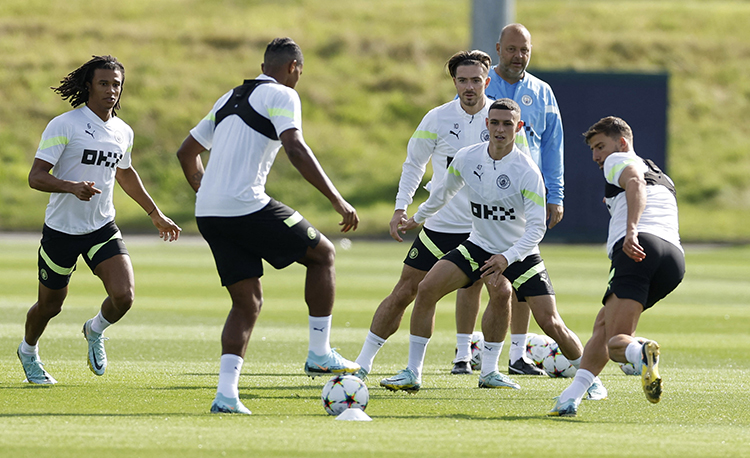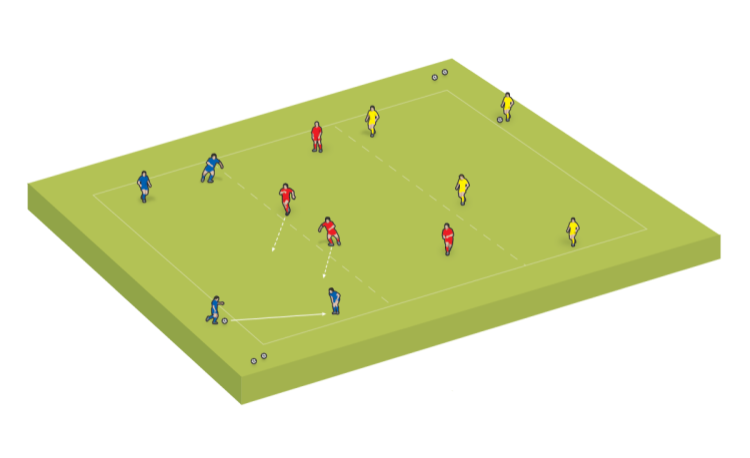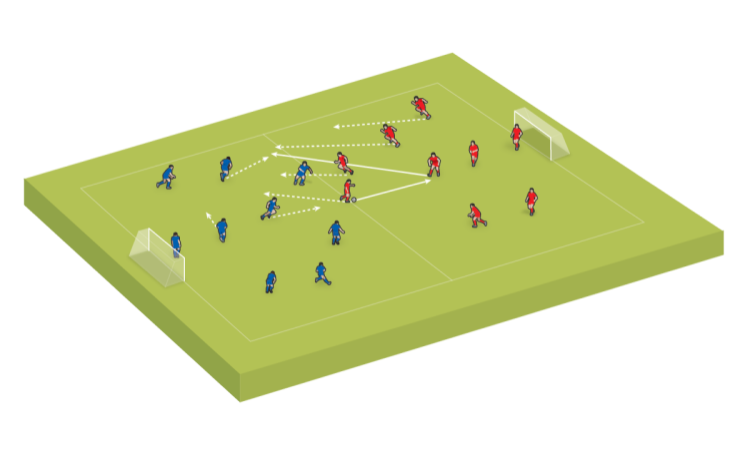Patience the key to a possession game
We all want to play a free-flowing style, but that is often tested when players are under pressure. Don’t panic - they must be encouraged to stay the course
One thing you can be sure of is that parents and coaches alike will be discussing formations and styles of play on the touchlines of youth matches all around the world.
Often that will depend upon the players and formation that the coach - and the parents! - are comfortable with.
Many coaches like their teams to keep possession and move forward quickly, building from the back. But how do we achieve that?
Everything should be done at speed - so training sessions must be focused on that scenario.
For a possession-based game, players need to be competent with ball control and decision making. Poor first touch or taking the wrong decision to dribble or pass will result in losing the ball.
Many coaches start out developing a possession game, but are tested when a turnover in their defensive third becomes costly.
When this happens, players need to be encouraged to stay the course. They need to adapt to this style of play for their own development.
"A possession-based game will bear fruit even if at first winning takes a back seat.."
When possession is the focus in the youth system, players become superior in ball control, composure and decision-making in their later years.
This then translates to adult soccer, and means the top players are all comfortable on the ball. As such, the leading teams all like to play out from the back and move upfield with the ball using incisive passing.
The practice that follows on page eight, from Theresa Echtermeyer, will help you to coach your team to keep the ball under pressure from the opposition. After all, it is when teams are under pressure that a possession game is truly tested.
Practice is vital but always remember – a possession-based game will bear fruit even if at first winning takes a back seat.
A long-ball game has limited use because it is predictable and teams can cover the direct pass. It also becomes less effective as size advantage evens out in the age groups.
Also, players should be allowed to switch positions throughout the season. If we label players early on and they join a team that already has players in their position, it can be difficult to adjust to another one - and they will end up on the substitutes bench.
Related Files
Newsletter Sign Up
Coaches Testimonials

Gerald Kearney, Downtown Las Vegas Soccer Club

Paul Butler, Florida, USA

Rick Shields, Springboro, USA

Tony Green, Pierrefonds Titans, Quebec, Canada
Subscribe Today
Discover the simple way to become a more effective, more successful soccer coach
In a recent survey 89% of subscribers said Soccer Coach Weekly makes them more confident, 91% said Soccer Coach Weekly makes them a more effective coach and 93% said Soccer Coach Weekly makes them more inspired.
*includes 3 coaching manuals
Get Weekly Inspiration
All the latest techniques and approaches
Soccer Coach Weekly offers proven and easy to use soccer drills, coaching sessions, practice plans, small-sided games, warm-ups, training tips and advice.
We've been at the cutting edge of soccer coaching since we launched in 2007, creating resources for the grassroots youth coach, following best practice from around the world and insights from the professional game.







